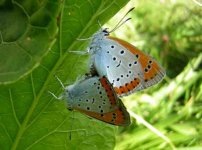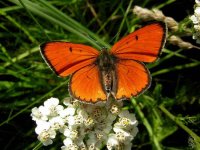sidwemn
Well-known member
The Rare Bird Alert Pager system is reporting several Large Copper of Carr Vale Nature Reserve near Bolsover in Derbyshire at the moment.
Could anyone confirm the current status of Large Copper in the UK? I assume they are part of an re-introduction either official or otherwise.
If anyone has details of where they are I would be interested regardless of thier status. I have never seen Large Copper anywhere and they are not too far to travel.
Thanks
Martyn
Could anyone confirm the current status of Large Copper in the UK? I assume they are part of an re-introduction either official or otherwise.
If anyone has details of where they are I would be interested regardless of thier status. I have never seen Large Copper anywhere and they are not too far to travel.
Thanks
Martyn





